PHOTOS BY George Kamper
[portfolio_slideshow id=9908 exclude=”9936,9937,9938,9939,9941,9942,9943,9944,9945,9946,9947,9948″]
As one might expect, Georgina arrived with an attentive entourage—just not in the traditional sense of an entourage. Rather, she was followed by a mishmash of devoted dogs, Jasper (her irresistible 4-year-old son), and a nanny guiding a bicycle bringing up the rear. Once all gathered, it created a memorable tableau.
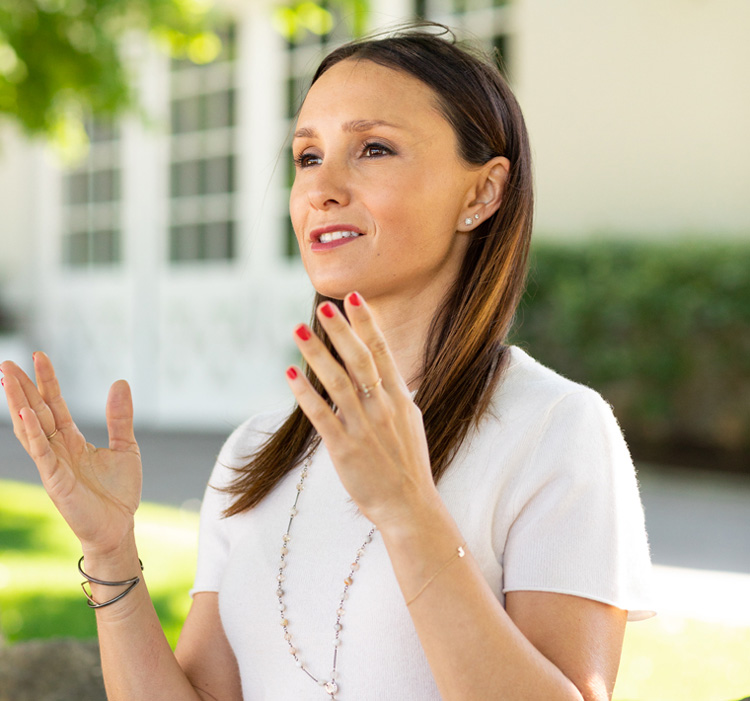
Georgina Bloomberg has long been a highly recognized and revered world-class international show jumper. The awards she has accrued, including over 50 grand prix and 10 Nations Cups for the U.S., and the prestigious teams she has competed on over her career are legendary. And she is only 35 years old.
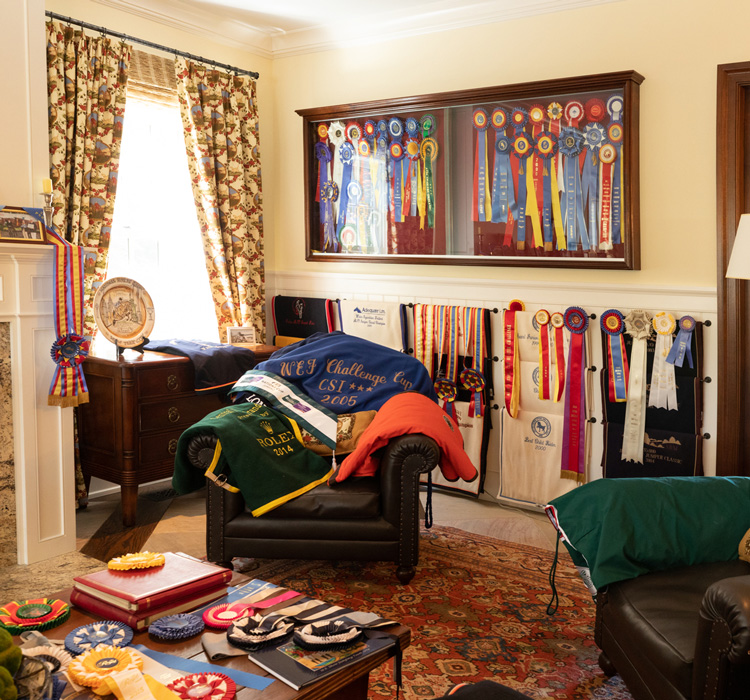
Her competition schedule would be daunting to even the most weathered traveler, yet she remains a fully focused competitor and was taking flight shortly after our visit to compete in Monaco, London, Paris, and other locations on the European circuit. This stint of shows would be followed by the kick-off of the signature U.S. fall events such as New York’s Hampton Classic and the American Gold Cup.
This was Equestrian Living’s second visit to Georgina’s Gotham North farm in North Salem, New York. Ann Leary first interviewed Georgina at her farm in 2012 for the magazine’s inaugural issue. At the time, she was taking a hiatus from competition in preparation for major back surgery, which would require a lengthy recovery. In the interim, she had co-authored several young adult novels with the equestrian A-circuit as a dominant theme. Her three rescue dogs that followed us about on that day in 2012 gave no hint as to what would develop on behalf of other rescues over the next few years.
An animal’s advocate
On our visit six years later, Georgina is energetic, fit, and downright radiant. I get the impression she has found the holy grail of contentment—knowing what you are meant to do. She has charged into her role as animal-welfare activist and educator with purpose and determination. She recently told The New York Times, “I’m so lucky to be in a position where I can raise awareness for the mistreatment of animals. Every day I wake up and think there is nothing I would rather be doing.”
And she is doing in leaps and bounds, with her efforts starting at home. As is often the case, interviews can begin in one direction and morph into something unexpected and inherently better. What was to be a tour of the new barn and sprawling property became an introduction to many of Georgina’s rescues. The 16 generous 12- by- 14-foot stalls were home to 14 show horses, with a corner stall reserved for rescues Wilbur, a rather corpulent pig, and Petey, the goat.
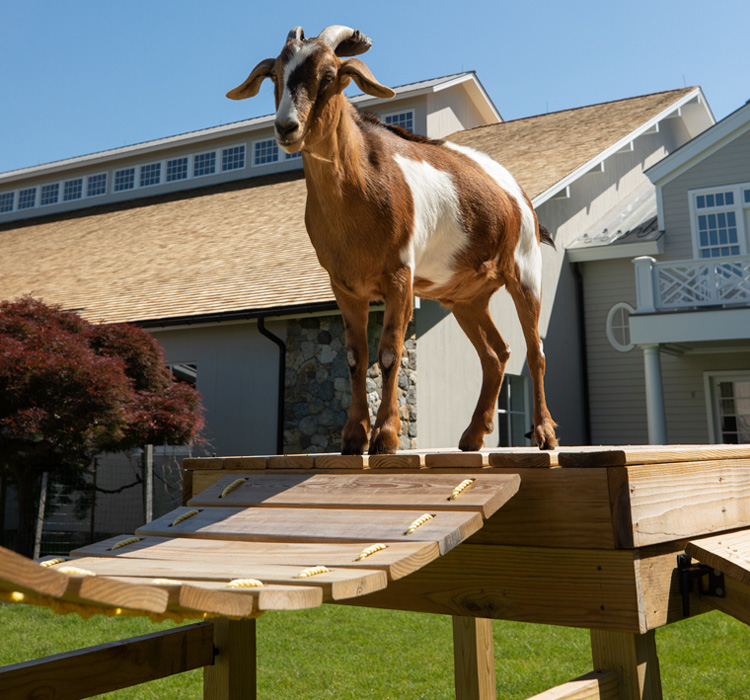
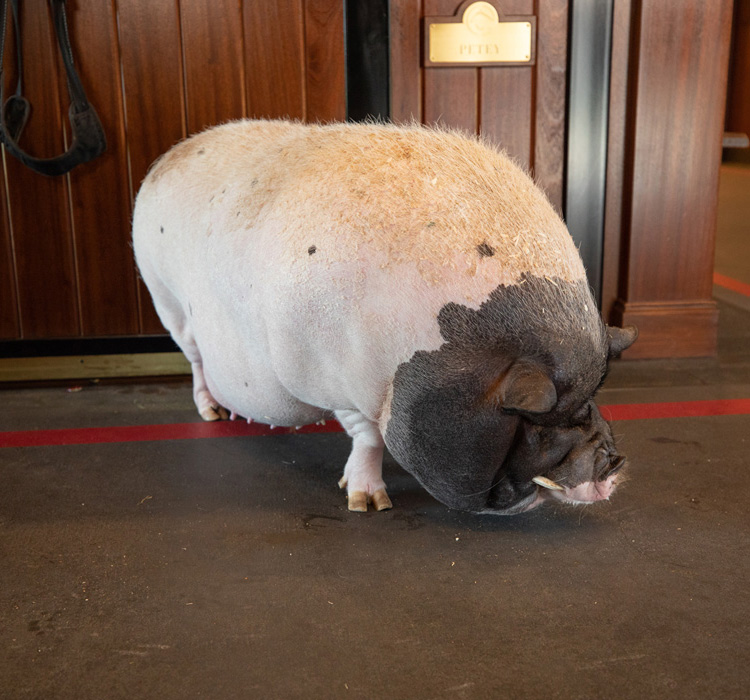
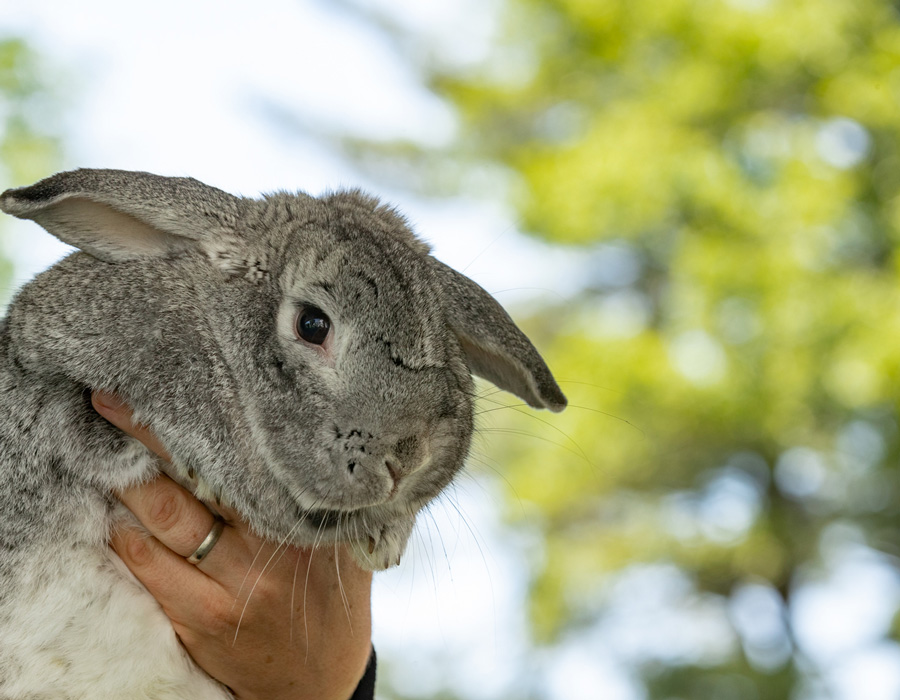
Her new barn is classic and understated, but a showpiece nonetheless. “We wanted to keep the same foundation for the barn, but we wanted to revamp it and have something a little bit bigger and more personalized to what I really wanted,” explains Georgina. “I wanted to be really involved with designing it. We found the builder, Jeff Pierson. He had done a lot of racehorse barns and a few barns in the area here. I wanted somebody that I got along well with and could work with every day on the interior design and make sure that it was exactly what I envisioned.”
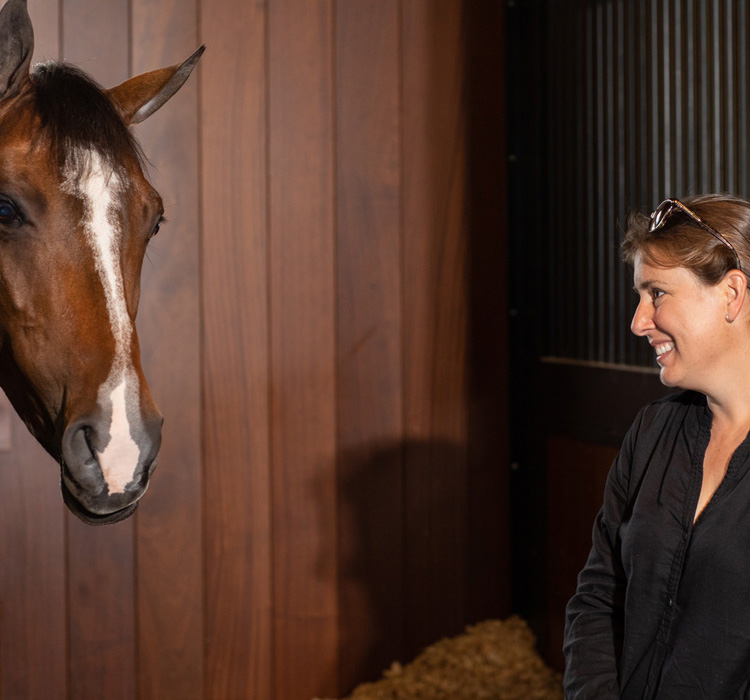
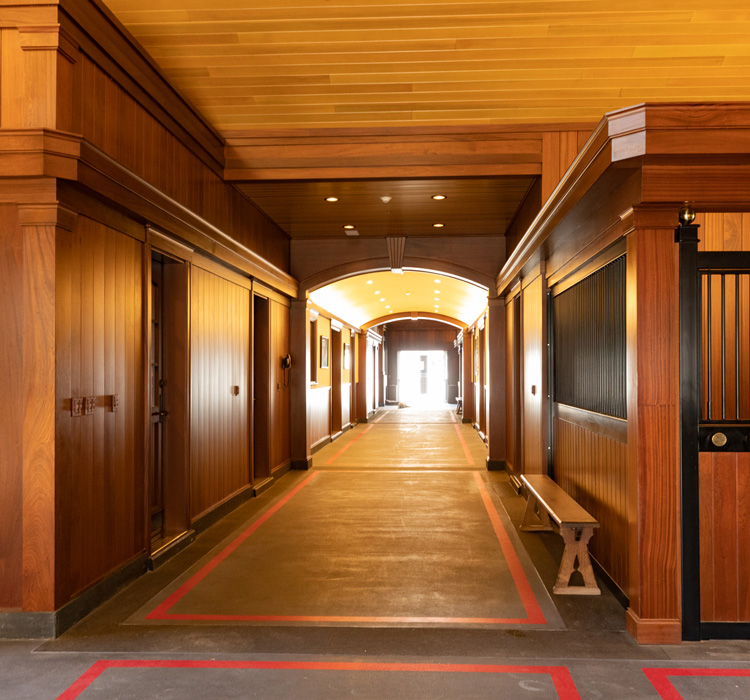
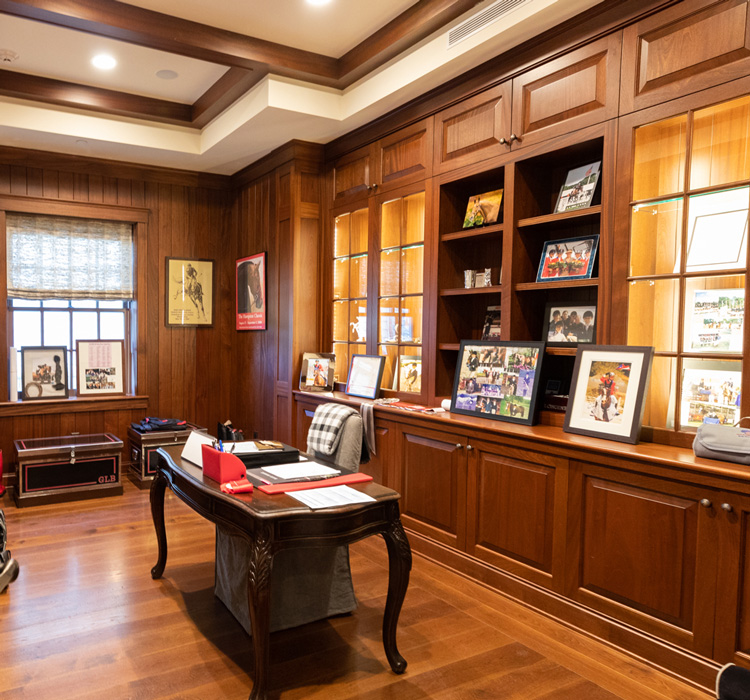
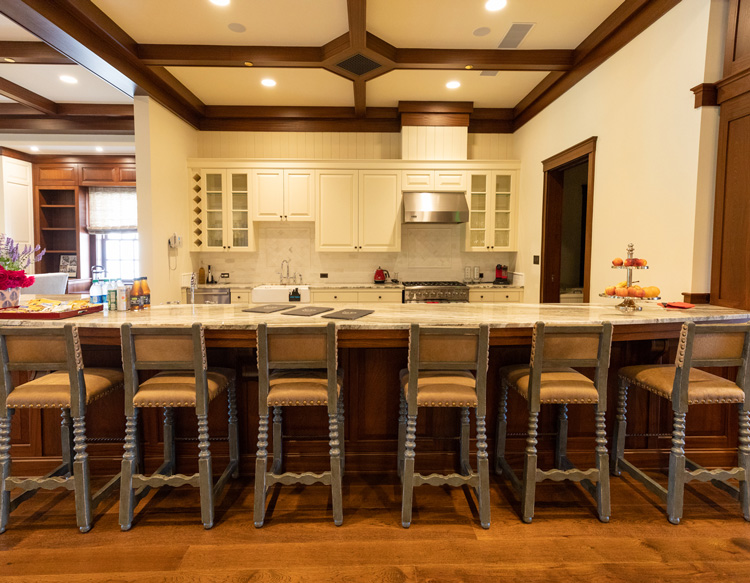
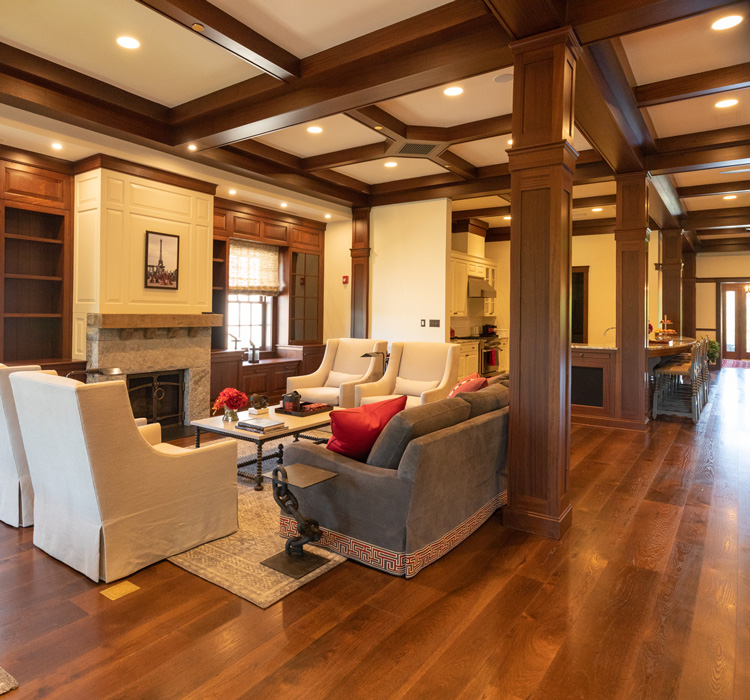
Georgina has long been a resident of North Salem and says, “There was nowhere else I even considered wanting to base. North Salem is a place I love, and where I feel at home.”

By this point, we had encountered six rescued and two foster dogs, a pig, and a goat. To meet more of the menagerie, we boarded two vehicles and caravanned to the upper pastures, which were home to two mules, two of Georgina’s retired show horses, a retired New York City carriage horse, and two rescued miniature horses. Technically, it was one miniature rescue, but Lola was pregnant with Harley, and now they have two.
“Every year, the Hampton Classic in New York does an adoption day, where we bring some horses looking for homes,” Georgina tells us. “One of the rescues we brought in a couple of years ago was Project Sage, which does a lot of work with rescuing minis, because a lot of minis actually go to slaughter because people think it’s like having a dog. Unfortunately, it is like having a horse and not a dog, and you can’t ride a lot of minis. People think that because they’re little, they should be cute and friendly, but that’s not always the case. They’re sort of an in-between kind of animal in that they’re not always rideable—they’re not pets, and they are just as expensive to keep as most horses.”
It would seem logical that Georgina would consider setting up her own animal rescue, given the space and tucked-away setting of Gotham North. “We wanted to incorporate it with the barn,” Georgina comments. “As you see, we have a lot of rescue animals here, and we always have a couple of foster dogs. We try to do little things along the way. I wanted to do something a little bit bigger, but the town turned it down. My dream is to one day have a place that’s not just a rescue or a sanctuary but serves as a temporary sanctuary for people who can’t take care of their animals for a short period of time.
“I keep meeting these dogs where their owners didn’t want to give them up, and they shouldn’t have had to,” she laments. “You see people who are deployed in the military or might have to be in the hospital for a few weeks or months and have no family or friends who can take care of their dogs. A lot of the bigger organizations and rescues will say, ‘Listen, if you relinquish your dog, that’s it. We’re not going to hold your dog temporarily and then be able to return it.’ It just doesn’t work.
“That’s something that I want to try to help with—helping people to be able to keep their dogs, afford vet care, and have some sort of situation where, if you can’t take care of your dog temporarily and can then prove that you are back on your feet, or able to take care of your animals again, that you can have your dog back,” she muses.
A wider reach
Georgina’s philanthropic efforts are becoming as legendary and globally recognized as her show-jumping career. Over the past several years we have become familiar with her relentless mission to eradicate puppy mills and raise the awareness of the rewards of adoption. Her rescue missions have also taken to the air to destinations hit by natural disasters. It’s not unusual for her to send cargo planes loaded with supplies for hurricane victims and return with as many rescue dogs as possible, creating more space for shelters to take in dogs that were displaced or left behind.
In response to Hurricane Maria in Puerto Rico, Georgina says, “It took a few more weeks than what we wanted because of the airspace being closed down and the airport being hit so hard, but we felt like it was worth the wait to be able to get a larger load of supplies down and a larger load back. A little over 400 dogs came back eventually over a couple of weeks.”
She arranged similar rescue missions in response to Hurricane Irma in Florida and disastrous floods in Texas. If there is a silver lining for animals in the midst or aftermath of tragedy, it’s the warm hearts of people. “Thankfully, whenever there’s a hurricane or any sort of natural disaster, adopting sort of becomes trendy,” Georgina admits. “It’s sort of the topic du jour, and it’s good to use that as much as we can, because a lot of people wanted a Hurricane Irma or Hurricane Maria dog because there’s a story behind it. When things are in the news, people are more aware of the animals and more likely to respond and say we can do something to help.”
Danny and Ron’s Rescue, a highly respected organization known throughout the equestrian community, originally began in response to Hurricane Katrina. “We talked about this with Danny and Ron,” smiles Georgina. “That was just them responding to Katrina and saying, ‘We’re just going to do what we can.’ Then they started seeing that they could do a little bit more, and now look at the difference they’ve made in the world.”
The Appeal of Rescues
Fortunately, it has become more appealing to adopt a dog, a trend that Georgina welcomes. “Back in the day, you used to walk around horse shows and it was Jack Russells and corgis in pens being sold. That’s what was available and trendy,” she notes. “Now if you make rescue dogs available, if there’s a pen of puppies and kids want to get a puppy, they don’t care if it’s a rescue or not. We do this at adoption day at the Hampton Classic
She also wanted to do something similar at Winter Equestrian Festival (WEF) in Florida. “When I bought in as a partner at WEF, I said I wanted it to have some sort of charitable aspect. It was the one thing I asked for in return from Mark Bellissimo—to be able to do something that would give back to animals,” Georgina admits. “He actually gave me the opportunity to start this program, where every Saturday night before the grand prix I have a tent, and we do a featured dog rescue every week. I try to pick smaller rescues that would never have an opportunity to get in front of a crowd like that. It puts the dogs in front of people. You might have somebody who’s never going to walk into the pound or a rescue or think of adopting a dog, but then they’re going to see these amazing dogs and say, ‘Wow! We didn’t know.’”
Georgina’s impact on the value of adopting has had a significant domino effect. One person shares a positive experience with another, and one by one another lost soul finds a forever home. “It’s amazing,” she remarks. “If you can inspire a couple of people, you never know what that’s going to lead to.”
In spite of her demanding schedule, Georgina was extremely generous with her time during our visit. But still the fierce competitor, it was time to send Jasper and the rest of her entourage off to pursue other activities while she got back to the business of being a champion show jumper.
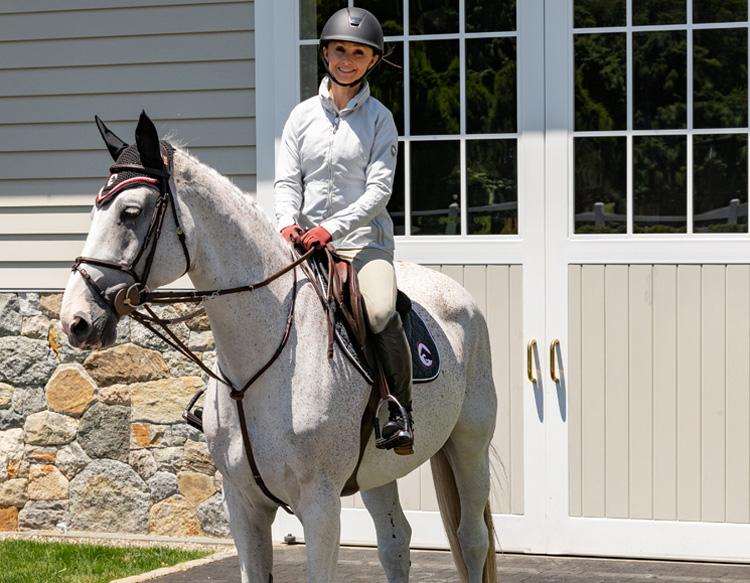
There was a certain level of solace in watching Georgina on Crown 5, her Holsteiner gelding, quietly walking onto the lush grand-prix field, leaving us and the demands of the day behind—if only for a short while.
Read more about Georgina’s philanthropy: A Life of Giving Back.
